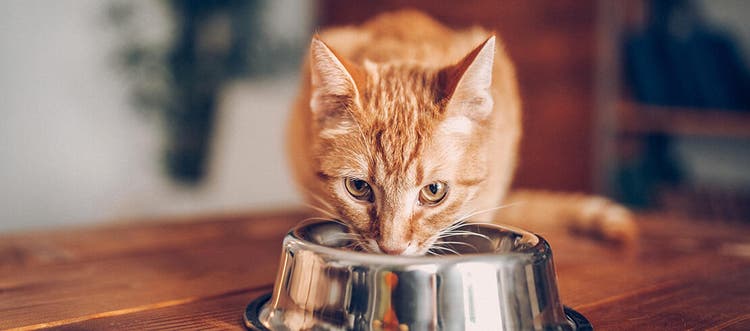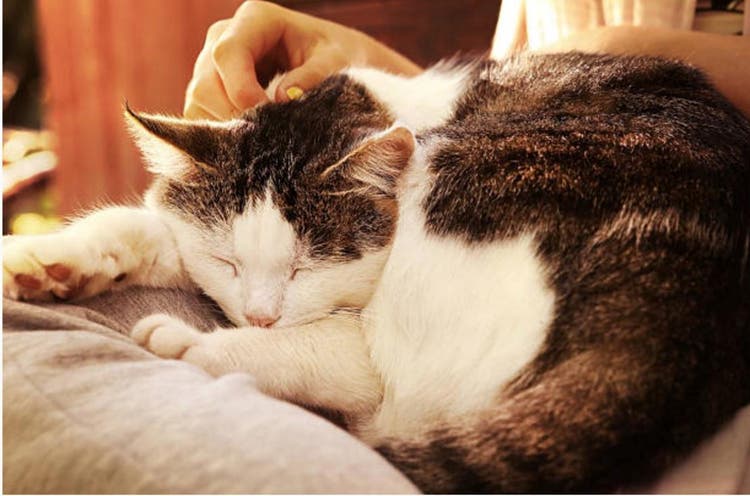Reviewed by Dr Abbie Lam DVM
Discover more about the beautiful, historic Norwegian Forest cat and learn whether this cat breed is right for you.
There’s something very Nordic about the Norwegian Forest cat – in fact, it’s believed that the Norwegian Forest cat, or ‘Wegie’, may have travelled with the Vikings on their longboats to keep rodents under control. Despite their wild history, Norwegian Forest cats have sweet, gentle natures to go with their incredibly good looks and make an excellent addition to any family.
Appearance of Norwegian Forest cats
Norwegian Forest cats are considered a ‘natural’ breed, which means that they evolved over time through natural selection instead of through human-led breeding programs.
Because of this background, these cats have adapted to meet the demands of their northern homelands and have dense, waterproof coats to protect them against harsh weather conditions. This coat, along with their large, muscular bodies and full, swishing tails, gives Norwegian Forest cats their highly popular ‘wild’ look.
Norwegian Forest cat personality
Though the Norwegian Forest cat may have a wild and storied history, they are a sweet and gentle breed. Most Norwegian Forest cats are:
- People and family oriented
- Playful
- Adventurous
Norwegian Forest cats can be a little shy around new people at first, but they are friendly and sociable after you win their trust. Once comfortable, these cats enjoy human companionship and thrive in a family environment. They also get along well with other pets and children which makes them a fantastic family pet. Read our guide on introducing cats to children.
Norwegian Forest cats mature slowly and may take up to five years to reach full adulthood, so they retain a kitten-like nature for far longer than other cat breeds. In other words, they love to play. However, this increased sense of play will naturally hone their hunting skills – something Norwegian Forest cats are known for. With their thick coat to keep them warm, they love to roam and explore outside, and are likely to bring you the occasional ‘gift’.
They also love to climb, not only outdoors but in the home as well, and you will often find them perched on a shelf or wardrobe, surveying their home from above. Creating a cat-safe area in your backyard means that your cat can enjoy the outdoors without roaming. A cat-proof fence or enclosure keeps them contained but also allows your cat to explore and play safely.
Health and care of Norwegian Forest cats
Rarely, Norwegian Forest cats can suffer from a hereditary glycogen enzyme abnormality (which can be DNA tested for) and hip dysplasia.
One thing to look out for throughout your cat’s lifetime is their weight – Norwegian Forest cats are prone to being overweight, so take extra care to feed them an appropriate diet and amount tailored to their age, exercise levels and life stage. Allowing monitored outdoor activity may help encourage exercise and promote weight loss. This can be done with on-leash walks, or access to an outdoor cat enclosure.
Norwegian Forest cats are large with robust, muscular bodies; males can weigh 4.5-7.5 kg, and females 3.5-5.5 kg. If properly cared for and fed a good diet that meets their nutritional needs, expect these cats to live for 14 to 16 years.
When choosing your Norwegian Forest kitten, look for energy, vigour, bright eyes and a fluffy, unmatted coat – all indicators of good health.
In Australia, these cats could suffer discomfort in our hot summers, so be sure to discuss suitability and appropriate care with a reputable breeder or your veterinarian.
Grooming needs of Norwegian Forest cats
Although they have an incredibly dense, long fur coat, Norwegian Forest cats are surprisingly low maintenance when it comes to grooming. They are adept at looking after their own fur and will devote a lot of time to keeping it clean. A good brush daily could help keep them tidy and free of tangles.
Is a Norwegian Forest cat right for you?
Norwegian Forest cats are desirable pets because they are:
- Beautiful
- Robust
- Playful
- Intelligent
- Relatively low maintenance
These cats fit into family life easily, getting along with children and other pets – including dogs – but they enjoy solitude enough to fit well within a busy household. As a natural breed evolved for hunting and exploring, they are at their happiest when they have safe access to the great outdoors. If the Norwegian’s sweet nature, beautiful appearance and wild background appeals to you, consider welcoming one into your home.
References
Fyfe JC, Kurzhals RL, Hawkins MG, Wang P, Yuhki N, Giger U, Van Winkle TJ, Haskins ME, Patterson DF, Henthorn PS. A complex rearrangement in GBE1 causes both perinatal hypoglycemic collapse and late-juvenile-onset neuromuscular degeneration in glycogen storage disease type IV of Norwegian forest cats. Mol Genet Metab. 2007 Apr 1;90(4):383-92.



